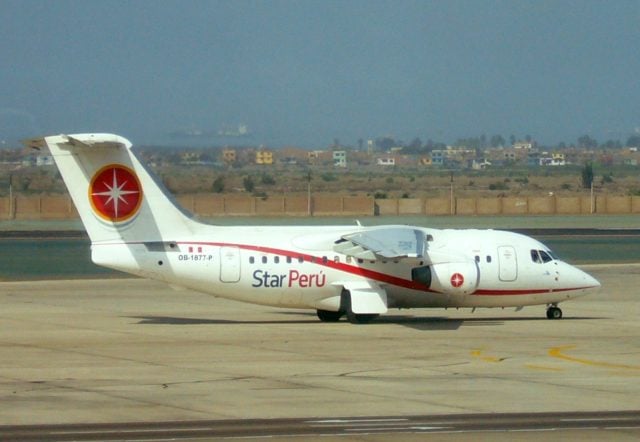Peru faces a worrying crisis due to fuel shortages that would affect, in less than 10 days, the aeronautical and tourism sectors. The situation has to do with the closure of the ports due to the presence of abnormal waves on the country’s coasts.
The state-owned company Petróleos del Perú (Petroperú) warned on Sunday about the shortage of fuel reserves for airplanes, which has been worsening in «the last few weeks» due to the lack of fuel discharge and the presence of irregular waves, which makes it impossible to carry out the transfer process, explained an article in RT.
The situation, which affects all fuel producing and importing companies in Peru, must be addressed by the rest of the private companies, including producers and importers, which control 77% of the local market. At the moment, the oil company assumes 23% of the remaining supply, equivalent to about 3,000 barrels per day of Turbo A-1 jet fuel.
In the specific case of Petroperú, the company pointed out that they are already carrying out «necessary actions to attend to supply», which in the case of the Jorge Chávez International Airport, the country’s main airport terminal located in the capital, Lima, is responsible for providing 19% of Turbo A-1, which is equal to 2,500 barrels per day, while the remaining 81% is provided by private companies that import and produce fuel.
What is Petroperú doing?
Petroperú reported that in the case of jet fuel, at the Talara refinery, located in the northwest of the country, there are 118,000 barrels of Turbo A-1 left in stock.
The seaport of that plant, which has been closed since July 5 due to irregular waves, should open this Tuesday, the19th, and after its opening it could transfer another 60,000 barrels for airplanes that are arriving by ship next Saturday the 23rd.
The availability of this fuel, warns the oil company, would be effective until July 27, just one day before the national holidays that will be celebrated on the 28th and 29th of this month.
In addition, Petroperú anticipates the arrival of another 200,000 barrels of imported Turbo A-1, which would be received at the Callao refinery on July 23 and would be available on July 27, due to «the need for the product to rest and its certification».
In parallel, the oil company has arranged to carry out the distribution of fuel by land, from the Talara refinery to the airports of Tarapoto and Chiclayo; as well as making «greater deliveries» to the Iquitos airport and increasing the production of Turbo A-1 at the Iquitos refinery, so that it also supplies that terminal.
Extreme concern for Peru
The president of the International Air Transport Association (IATA) of Peru, Martín La Rosa, said in an interview with the local Canal N that the current situation «is of extreme concern», especially since it coincides with a high season because of the national holidays, which could cause, «in the worst case», that at least 30% of the passengers traveling between July 27 and 31 could be affected.
In La Rosa’s opinion, Petroperú’s warning would have come late because although the abnormal waves on the coasts have been occurring for at least two weeks, it was last Friday when the airlines learned of the fuel shortage, when they were urged to ration fuel through the cancellation of flights.
In addition, he questioned that Petroperú does not have emergency reserves and «has not taken necessary actions» to avoid putting in «serious danger the continuity of an essential service, especially in high season». «Our complaint is that the logistics have not been carried out correctly to foresee this type of situation», said La Rosa.
The IATA spokesman, who stated that he was willing to establish a dialogue with the actors involved, also expressed concern that the supply of fuel for aircraft is not guaranteed in the country, since there would only be reserves for a maximum of 13 days.
«The reserves of Tacna, Maldonado and Arequipa have already been used», said La Rosa, who added that the airlines are refueling abroad and taking measures such as reducing cargo operations, although he warned that these actions have a negative impact on the trade sector.
«Airlines are doing their best not to raise alarm bells yet», he said. On the other hand, he assured that they are coordinating the supply with private providers, who manage their own emergency reserves with caution because «they cannot reach the point of shortage» of fuel.
Impact on tourism in Peru
For his part, the president of the National Chamber of Tourism (Canatur), Carlos Canales, transmitted the alert from that sector because the eventual suspension of flights in the holiday season could lead to losses for service providers.
Among those affected would be from small to large businesses that work during the holidays. Hotels, inns, restaurants, internal transport in tourist regions, among others, could lose more than 200 million dollars.
Canales asked the authorities to take action before the situation worsens. The ‘situation’ also coincides with the call for an indefinite strike by heavy cargo carriers, who are demanding a reduction in fuel prices, among other demands, and the national strike of farmers due to the rise in the prices of fertilizers.












